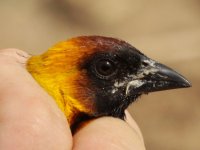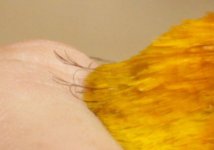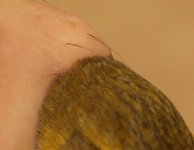tomjenner
Well-known member
I take a head shot of every weaver I catch and when going through them I keep noticing these long hair-like feathers on the nape. They are more noticable on the males, because they are black against a yellow background, but the females also have them. I was checking some today and they are not all over the body, just the nape. Does anyone know what these feathers are, and are they found in other species?
Tom
Tom






